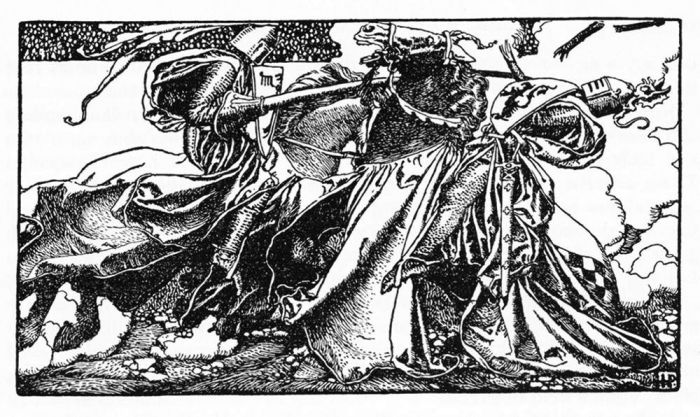Rediscovering Howard Pyle

Salon’s Emma Mustich interviews Margaretta Frederick about the works and influence of illustrator Howard Pyle:
It seems like Pyle had an active role in shaping our understanding of classic Western tales — his illustrations of romantic, fantastical characters, like pirates, have had impressive cultural staying power. How has Pyle shaped the stories that we know — or shaped the way we envision certain sorts of things? Have people who may not have actually heard of Pyle still been influenced by his work?
Well, certainly in terms of what the average person on the street today thinks of as a pirate, that image was something that Pyle conceived. Because there wasn’t that much documentation of what pirates wore, much of it was Pyle’s creation. Early moviemakers looked to Pyle’s illustrations when they were creating, for instance, the Errol Flynn movies; modern-day filmmakers do the same — [as in the case of] the “Pirates of the Caribbean” movies. I mean, it’s documented fact: The creators of “Pirates of the Caribbean,” for instance, talk about looking at Pyle’s work — because that’s what we all think pirates look like. That’s definitely from Pyle.
What Pyle did with things like the Arthurian tales was to retell them for an American audience (in this case, of course Arthur was a British figure). That’s something slightly different. But yes, I would think most Americans, when they think about Arthur, are thinking about Pyle’s illustrations — not an English version.
As a child, I was obsessed with Howard Pyle’s retelling of the King Arthur stories — I think it’s safe to say that they were my favorite childhood books — and much of that had to do with his beautiful illustrations of Arthur, Guinevere, Pellias, Percival, and many other Arthurian figures.
Enjoy reading Opus? Want to support my writing? Become a subscriber for just $5/month or $50/year.
Subscribe Today